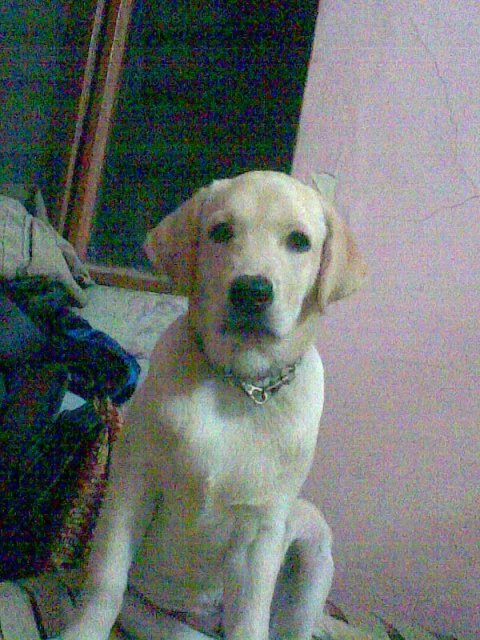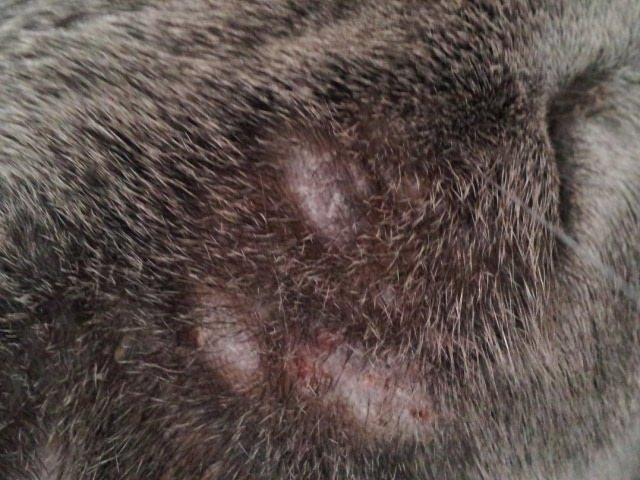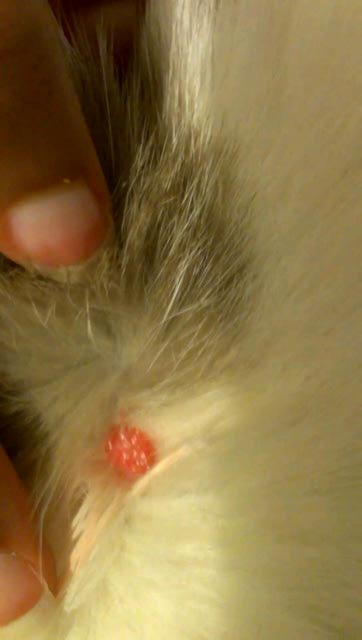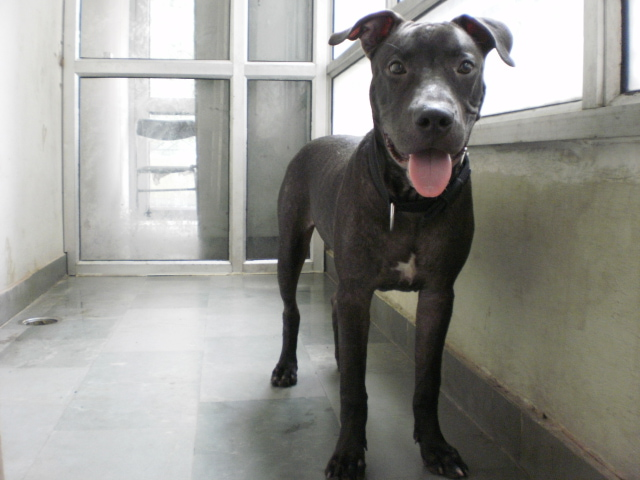QuestionI have a toy fox terrier, male, about 5-6 years old. He grew up from 8 weeks old with another pet we had (beagle-dachund mix) who died from congestive heart failure a year & a half ago. My husband and I separated 4 months later. Now, a year has gone by and I just got my terrier back, he had stayed with my ex. He was never left alone. I am gone 13-14 hours 5 days a week at work and in and out on weekends. I love on him, walk him, play with him, cuddle him when I'm home. He whines constantly. My neighbor told me last night he howls the most pitiful wale the whole time I'm away. I feel he's in a type of mourning and I'm not there enough for him. I've had him a month now. Its not getting better. Do I need to take him back to my ex where he is never left alone? I love him and want to do what is best for him. Please advise, I've very worried about him. Thank you. His name is Tigger.
AnswerThis sounds like separation anxiety and there are a few things you can do. Until he adjusts and you can get him to relax or desensitize him with behavior modification, medication may be helpful. CLOMICALM is what is often used. Other things to try are RESCUE REMEDY in his water dish and a few drops in his mouth before you leave as well as getting COMFORT ZONE with D.A.P. which is a diffuser with calming pheromones.
Here's more info on Separation Anxiety for you and some tips....
GOOD LUCK!
Dogs with separation anxiety destroy objects, urinate, defecate, vomit, or salivate when they are left alone. In extreme cases, dogs can be left alone for no longer than 10 or 15 minutes before they panic and exhibit behavior associated with anxiety. Sometimes separation anxiety is caused by a change in schedule that necessitates the dog be left alone for longer that normal. Idiopathic changes in older dogs may also cause sudden separation anxiety.
Separation anxiety may also be associated with a traumatic event such as being in the house during a fire, during a burglary attempt, or while an alarm system sounded. Dogs at risk for separation anxiety include those rescued from humane shelters, laboratory situations, the street, and those that have spent a lot of time in kennels or with a housebound person.
Treatment
Treatment for separation anxiety teaches the dog that it does not have to be fearful and panic when it is left alone. Most dogs respond to a smaller space where they feel secure, such as a crate. If the dog panics when crated, do not force it. This will make the situation worse.
Behavior modification for dogs with separation anxiety is designed to teach the dogs to "sit," "stay," and "relax" while the owner performs various behaviors, some of which may be upsetting to the dog. The dog is trained to do this exercise with all members of the household, in each room of the house, and outside. Dogs with separation anxiety are usually anxious in various situations and it is important to teach them to relax at every opportunity. Each member of the household should practice training the dog every day.
Next, the dog is left alone for gradually increasing amounts of time. Crate the dog or isolate it in a small, well-lit, temperature-controlled room when you are not at home. Make sure that the room is safe (i.e., no dangling cords, uncovered electrical outlets, open areas of water, such as a toilet) and provide a blanket or bedding, water, toys, and a biscuit. Remove the dog's collar (to prevent strangulation) and remove anything in the room that can be destroyed. Leave the television or radio on and place an additional light on a timer to go on 15 to 20 minutes before you come home. A timer can be used to modify behavior and signal to the dog that you will be returning. If possible, have someone visit the dog during the day.
Separation anxiety can sometimes be relieved if the dog can observe the outside world (e.g., if the crate can be placed by sliding glass doors). Some dogs do better if they are safely and comfortably left outside.
Desensitize the dog to cues that indicate you are about to leave for the day. Pick up your keys, but do not go anywhere; put on makeup and dress up on the weekend; go to work wearing a jogging suit; use a different door than normal; change your daily routine. This helps to reduce the dog's anxiety-based behavior, which may include:
pacing, panting, whining, pupil dilation, ear movement,
frequent solicitation of attention, hiding, and
jumping.
Most dogs with separation anxiety require antianxiety medication, especially those that experience sudden anxiety caused by trauma. Antianxiety medications have limited side effects and tremendous benefits.
=====================================================
Many dogs are uncomfortable and fearful when separated from their "people", or in a dog's mind, their pack leaders since dogs are pack animals. There are a lot of social interactions that can play into a dog's ability to be content and peaceful when left alone. During a dog's life there are many times they can become susceptible to impressions. One of the dog's critical learning times is around the age of 6 to 13 weeks of age when they make solid and lasting impressions of the world around them. They learn about the environment and what happens in certain situations. For some pups this critical period of socialization is filled with all sorts of interesting stimuli, including having to be left alone for a time. If nothing stressful happens while alone, the pup will grow up accepting being alone as normal and "no big deal". In other cases, the pup may experience something fearful while left alone during the critical period of socialization. For example a thunder storm experienced while all alone during the critical period of socialization may imprint in the dog for life the fear of loud noises; if someone ring the door bell or knocks loudly on the door, the pup may grow up with excessive responses to anyone at any door.
The next question is, what can you do about a dog that experiences separation anxiety? If it is mild, you may be able to desensitize your dog on your own. If the anxiety is strong behavior, you would benefit most by finding a trained veterinary behaviorist to help you come up with a plan of behavior modification. This usually involves a veterinarian who has taken postgraduate training and specializes in the study and treatment of animal behavior. They will examine your dog, take a good history, and talk with you and then come up with a method to desensitize your dog. Part of this plan will often incorporate the use of various anti-anxiety drugs along with methods of behavior modification created from this history. No matter what you do, it will take patience, persistence and some creativity to come up with a way that will work for each animal. Remember, you are trying to change the dog's solid perception of cause and effect relationships. Often when these dogs are secretly videotaped it has been found that they exhibit their anxiety within 30 minutes of the owners leaving and again within 30 minutes of the owners arriving back home again.
If you think your dog's separation anxiety is mild, there are some things that you can try on your own. A few of these things are: Having a room or area that is dedicated to a safe area for your dog while you are gone. It may help to have this be their special room at night as well. This is a time when they know you are there but they are still in their special room and they can learn to feel safe even if they are not in the same room with you. Decide what you think might work best and then start getting your dog used to this room or area. Many times leaving the TV or radio on at a good level will help them to not feel so alone. Also have the safe place in an area, if possible, that is more insulated from outside sounds. Dog's that are crate trained can be much easier to work with; it just depends on the dog. (See a selection of crates at PetFoodDirect.com.) Most dogs initially become anxious in crates so you would need to crate train them first while you are at home, then move on to the separation anxiety. Some dogs become anxious at confinement if they are not used to it.
Once you decide where you would like your dog to stay, the next step is to come up with a plan. The goal is to get your dog comfortable in their safe room first. Then you begin leaving the room for short periods and return. Next is to leave the house, and come back in 5 minutes or so and slowly lengthen how long you are gone. The idea is to add reassurance that you are coming home and then slowly lengthen the time gone. It will take time, patience and reassurance to accomplish this desensitization to your absence. Some people have actually taken time off from work to get this problem corrected.
Sometimes the situation does not get better without help from an animal behaviorist's evaluation. Often an animal behaviorist will use a combination of specific behavior modification and the use of anti-anxiety medication. Talk to your veterinarian about consulting an animal behaviorist and using medication if the anxiety is severe. Some of the medications used for this behavior problem are Amitriptyline, Clomipramine and Buspirone. The desensitization process is complicated to explain and since every dog is a little different there is no one way that works. Your dog's history, breed, interaction with you, etc. are all taken into consideration... then a desensitization plan is created very specifically for your dog. Just like in people, animal behavior is quite complex and we may need help through it from a professional.
As a final note, some people recommend getting another pet to help solve the problem. It really depends on the circumstances. If it works according to plan, then you now have two happy, interactive pets that don't need you to "baby sit" them. Be aware, though, that if your first dog is so upset at you leaving, the new puppy may learn this behavior too! In some cases the new dog displays no anxiety but the anxiety of the other dog persists. Each case is unique. The goal is to find a way to modify, eliminate, or at least alleviate the anxiety. Begin your plan with your veterinarian, then consider the animal behaviorist. Most of the teaching veterinary schools have certified animal behaviorists on staff.

 A Major Skin Rash : Please Help
Question
SNC00024.jpg
Sir,
I have a White Female Labra
A Major Skin Rash : Please Help
Question
SNC00024.jpg
Sir,
I have a White Female Labra
 LABRADOR HEIGHT
Question
TOBO
MY LABRADOR IS NOW 5 MONTHS OLD....
HIS H
LABRADOR HEIGHT
Question
TOBO
MY LABRADOR IS NOW 5 MONTHS OLD....
HIS H
 Cats play fighting
Question
Brunos scratches Brunos scratches
Cats play fighting
Question
Brunos scratches Brunos scratches
 Red sore on my cat
Question
Cat Sore
Hi. I recently noticed a
Red sore on my cat
Question
Cat Sore
Hi. I recently noticed a
 ivermectin dosage
QuestionQUESTION: Can ivermectin tablet 10mg be adminis
ivermectin dosage
QuestionQUESTION: Can ivermectin tablet 10mg be adminis